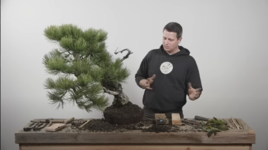MrFancyPlants
Masterpiece
One think to keep in mind when it comes to shooting down HBR and Anderson Flats is that the material Ryan Neil works with is not in development phase like the material most of us work with. He doesn’t want to HBR because it sets back the timeline for getting the tree show ready.
Most of us mortals don’t need to worry about that, and growing out our trees is more likely to speed development than to set it back.
Take my perspective with a grain of miracle grow, because I am not a paying member, and correct me if I am wrong, but even sacrifice branches are a rarity in the material that RN works on. And, we know that sacrifice branches greatly speed development generally.
I do love to watch the 2nd repotting video, and appreciate the discussion, references and links. Besides quality repotting videos being like bonsai porn for me, I think I have a couple Hemlock that could be candidates for having their Shin developed in the next couple years.
Most of us mortals don’t need to worry about that, and growing out our trees is more likely to speed development than to set it back.
Take my perspective with a grain of miracle grow, because I am not a paying member, and correct me if I am wrong, but even sacrifice branches are a rarity in the material that RN works on. And, we know that sacrifice branches greatly speed development generally.
I do love to watch the 2nd repotting video, and appreciate the discussion, references and links. Besides quality repotting videos being like bonsai porn for me, I think I have a couple Hemlock that could be candidates for having their Shin developed in the next couple years.








